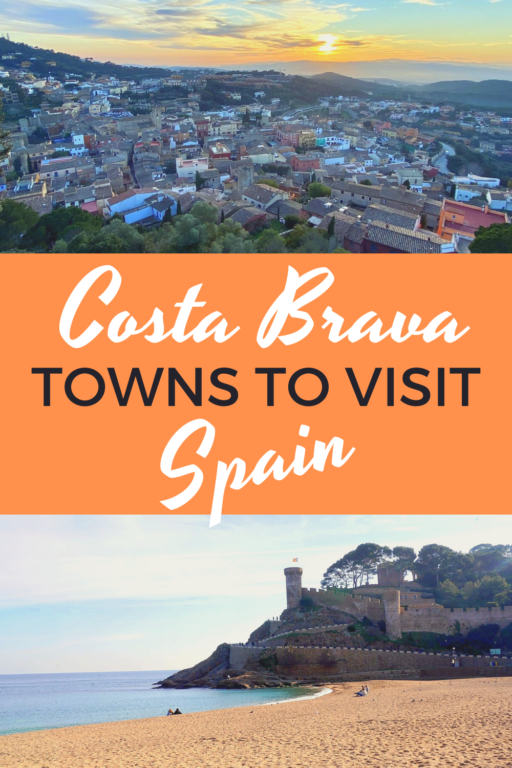Barcelona, Spain has a lot to offer visitors no matter what your interests are. But, there are also many areas outside the city worth exploring. We always enjoy day trips outside of European cities for the chance to discover something new. We recommend exploring these Costa Brava towns to visit on a day trip from Barcelona.
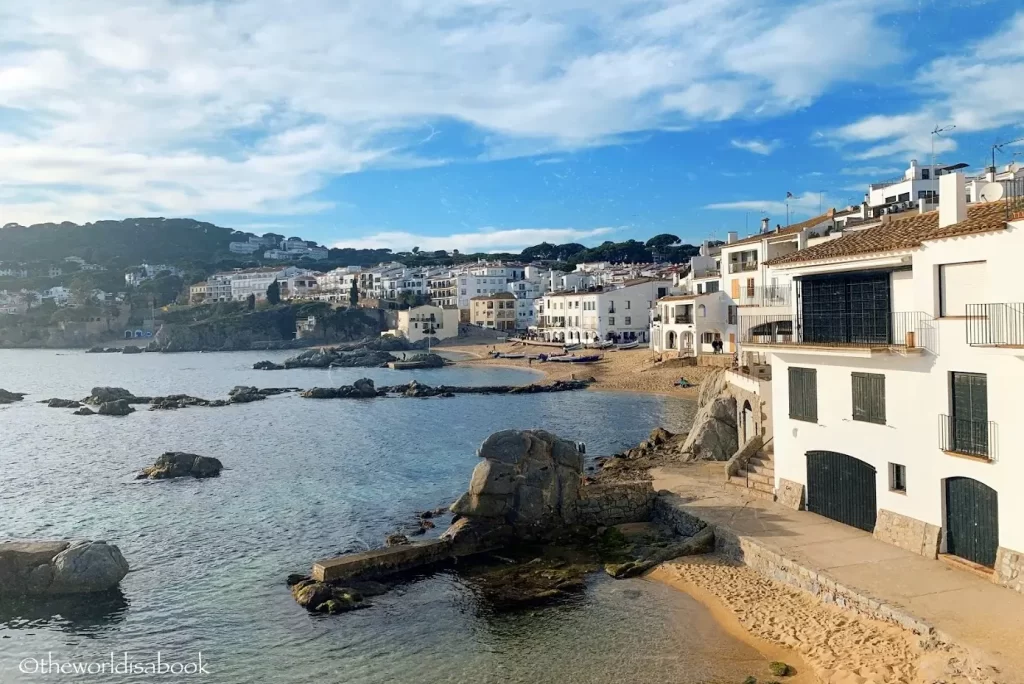
Costa Brava means “wild coast” in Spanish. This coastal area consists of several small towns and many beaches.
It stretches about 124 miles (200 km) all the way to the French border. If you’re in Barcelona or Girona, renting a car and driving is really the best way to see most of these villages since you can be flexible with where to stop and for how long.
This is the route we took from Barcelona and our itinerary for the day. These are the highlights and a sample of the best towns in Costa Brava to visit on our route. We recommend starting early in the morning to make the most of your day and ended the day with a sunset viewing around 6 PM.
Lloret de Mar City
We visited Lloret de Mar City first. It was the most touristy of the towns. A small stretch of red sand and palm trees lined the beach, with restaurants, bars, souvenir stores, and hotels across it.
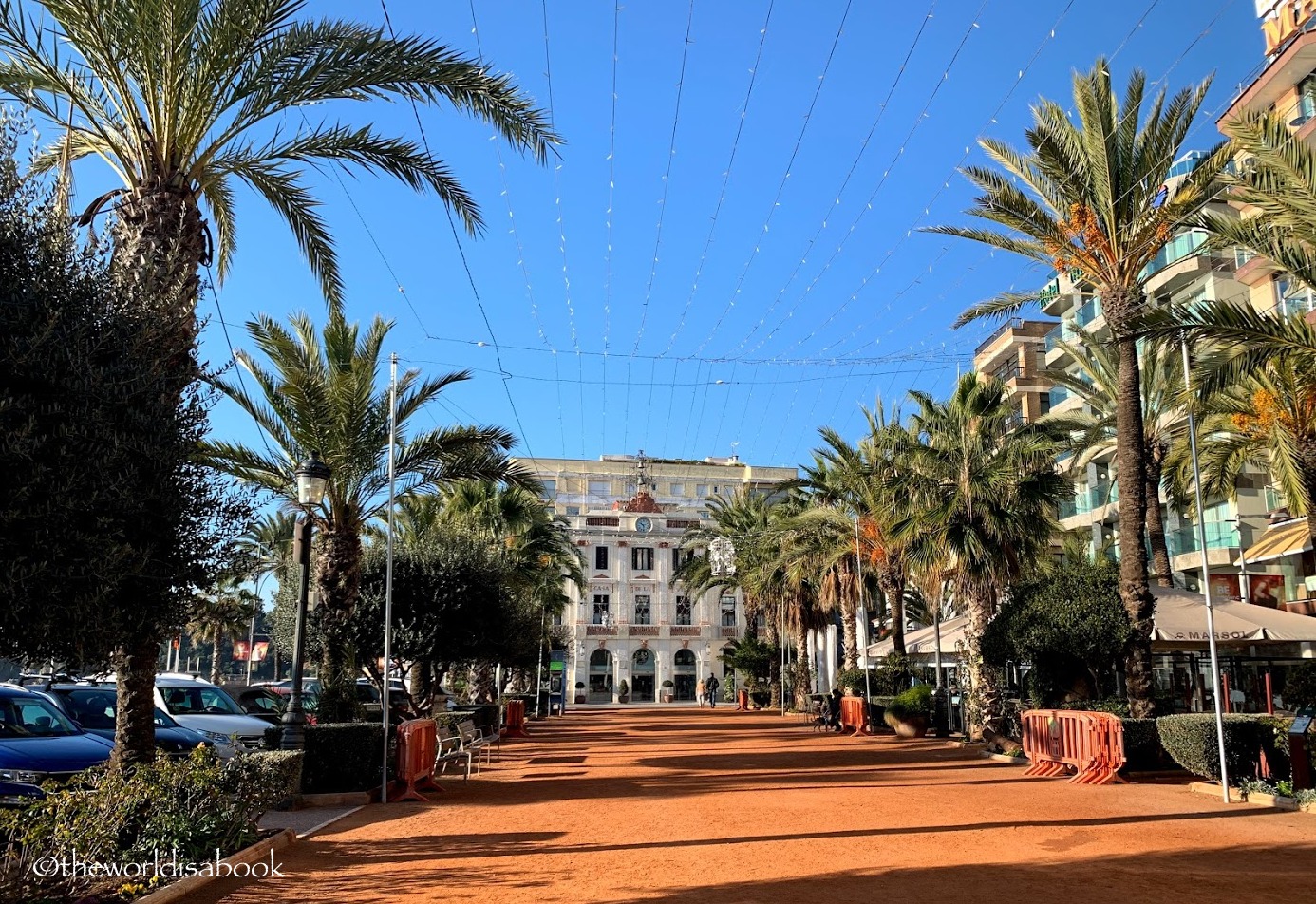
We loved that the palm tree lined paved boardwalk and beach were wide. There were plenty of parking spaces by the beach. It was fun to walk on the sandy beach, even during winter, that stretched for 0.6 mile (1km).
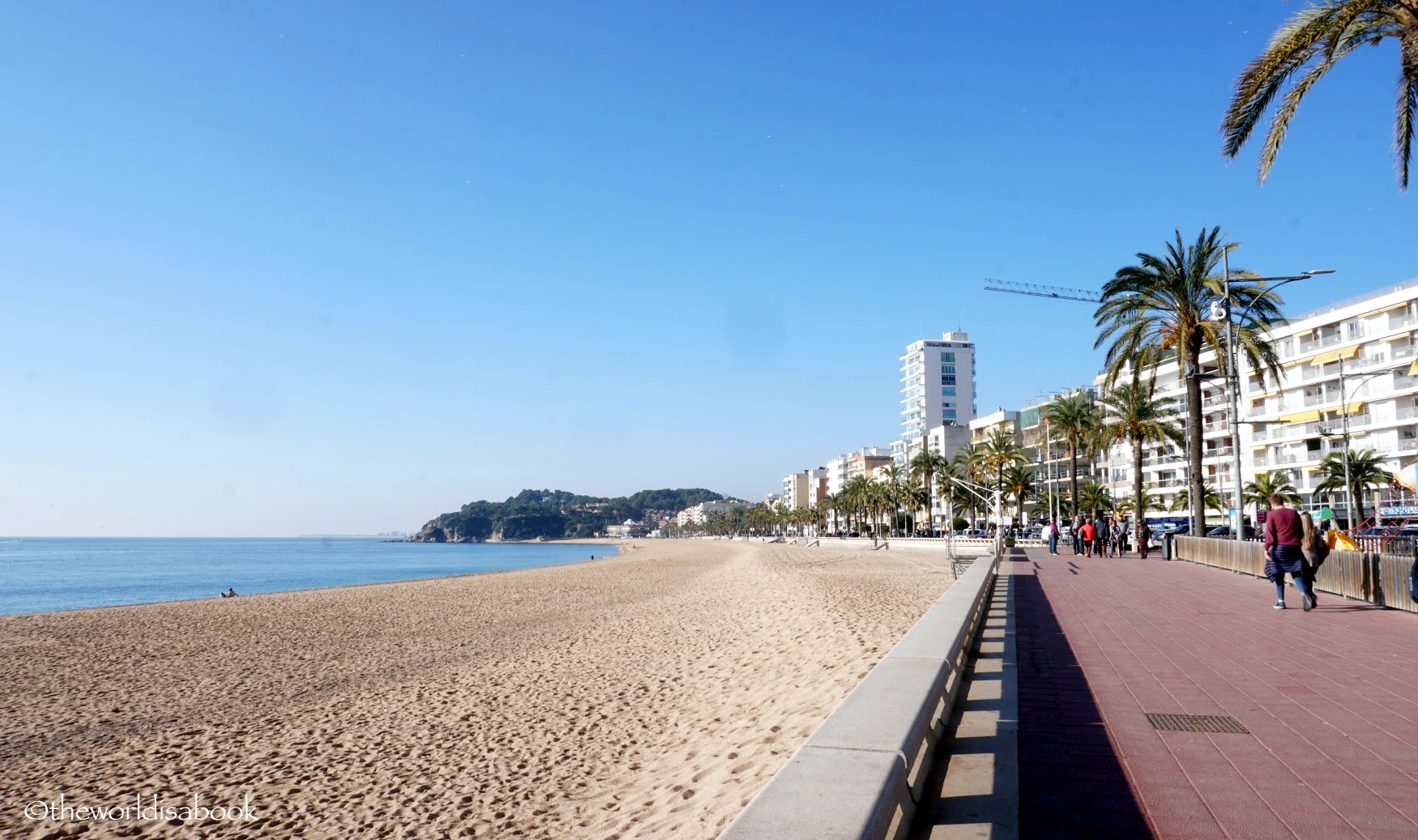
There is also a historic area with narrow and mostly pedestrianized streets worth walking around. Don’t miss passing by and entering the church of Sant Roma.
While the front of the church was a 16th century Gothic style, its two domes were very colorful including the mosaics of the 12 apostles. This portion was built in the 19th century inspired by the Catalan modernism. The church was beautiful!
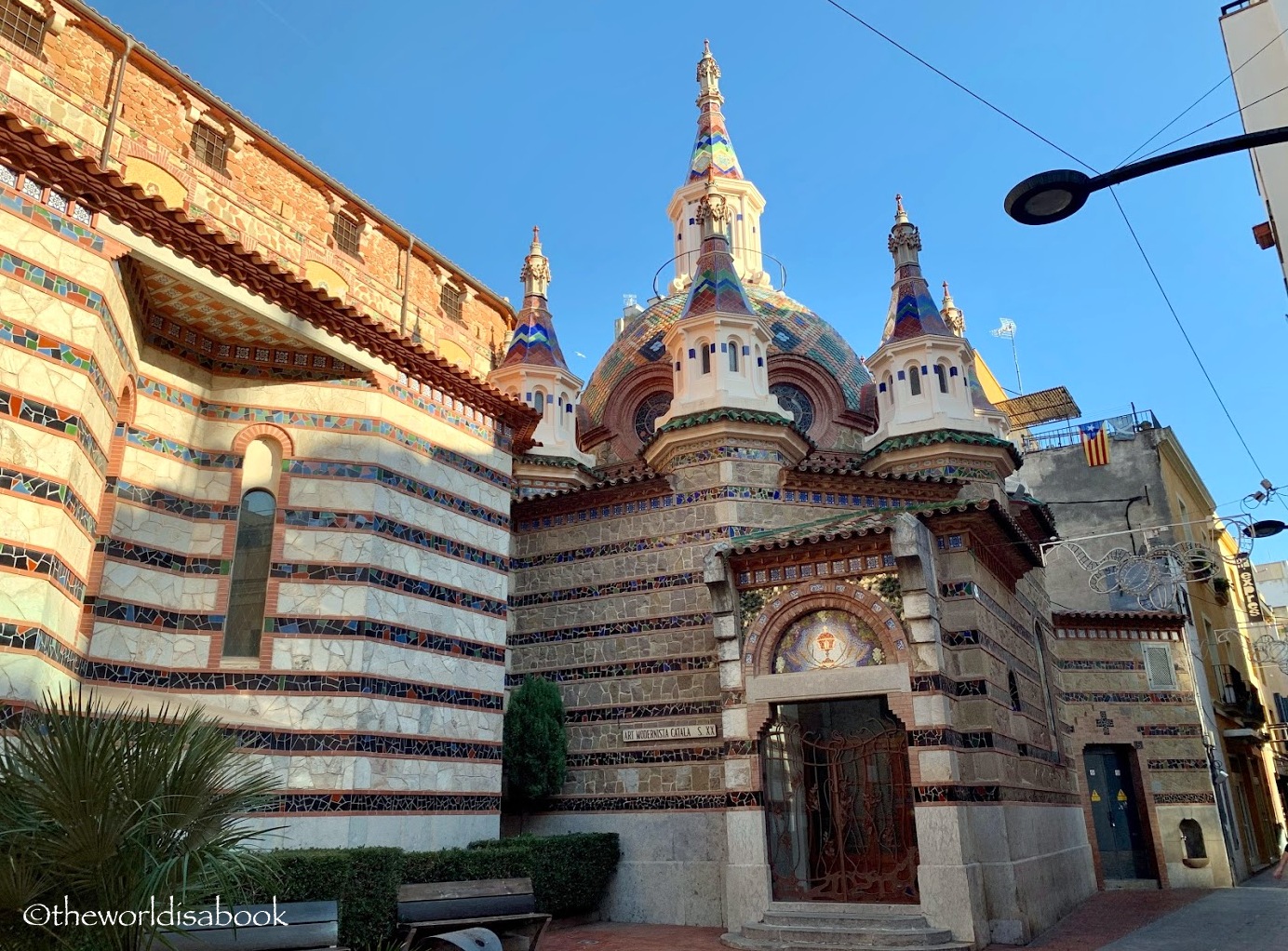
It was quite unique and impressive and free to go inside. Though, its interior was not as opulent as its exterior. We were lucky enough to see a Christmas/Nativity scene and village during our visit.
The Castles of Lloret de Mar
At the north end of the promenade on a hill was the beautiful and fairy-tale looking Castell d’en Plaja.
Although it may appear to have been here since medieval times and filled with history, this castle was actually built in the 1930s. It is privately owned and, as a result, inaccessible to visitors for tours.
Though, we enjoyed the small beach underneath the castle and hill called Sa Caleta. This was the ideal spot to enjoy views of the town, promenade and beach and have the castle in the backdrop. There was also a stone staircase nearby to go up to a scenic viewpoint.
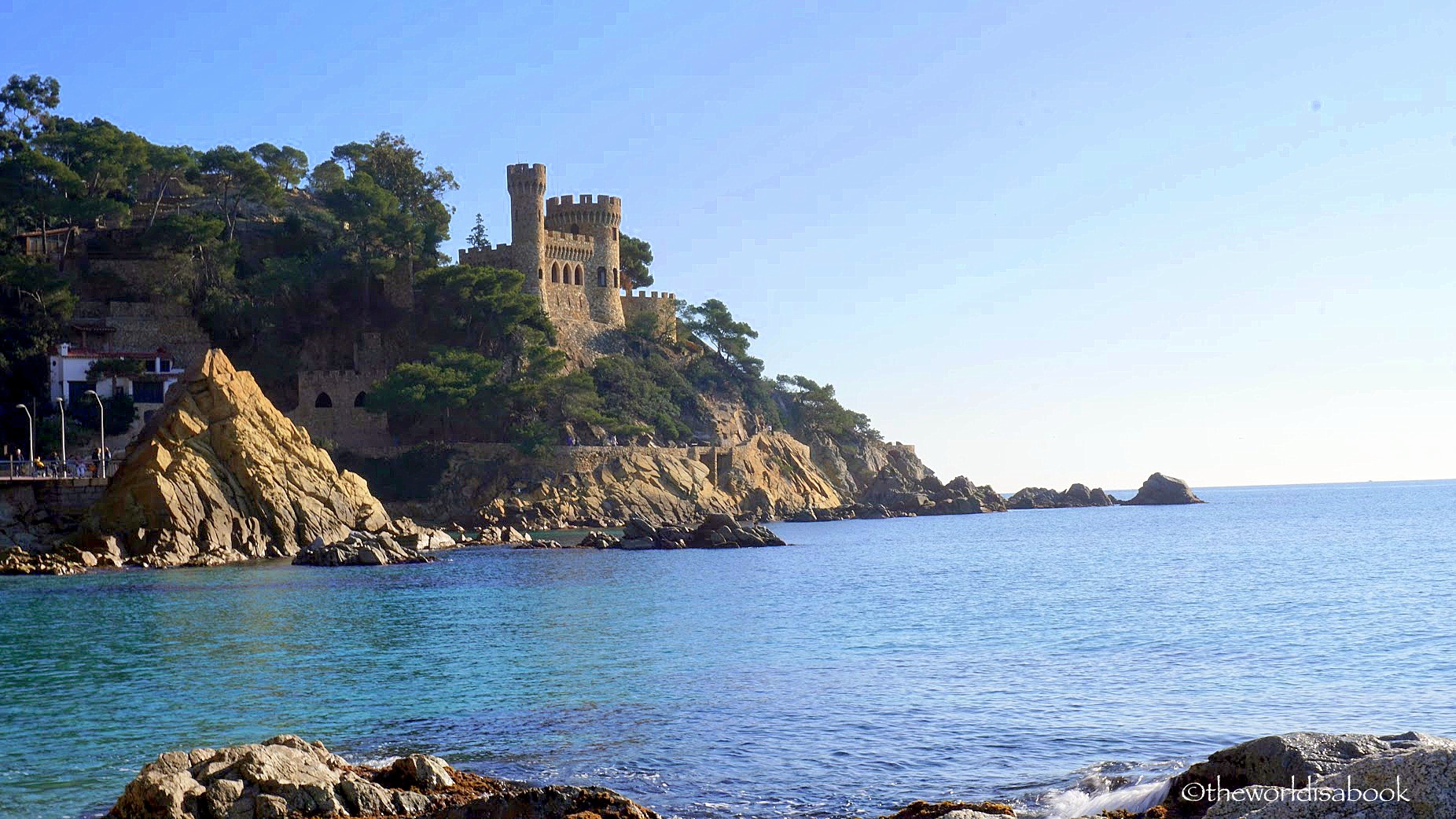
If you want to visit an authentic, 11th century medieval castle in Lloret de Mar, check out Castell de Sant Joan (Sant Joan Castle) that’s located on a high cliff. There’s not much left of the castle’s glory days.
The Tower of Tribute still stands, and visitors can explore the grounds during specific hours. But, the seascape and panoramic views looks like it’s worth the steep climb up to the hilltop.
If you have more time in Lloret de Mar, Europe’s biggest waterpark, Water World is located here. You can certainly spend a whole day there in the summer.
There was plenty of water sports offerings, hiking trails around the area. If you need an escape from the crowds and want some quiet spaces to explore and enjoy a great view, visit Jardines de Santa Clotilde or Santa Clotilde Gardens.
Tossa de Mar
Our next stop was Tossa de Mar which was my favorite town and certainly the most picturesque. The hotel areas and city district were mostly deserted on an early January weekday. So, we spent most of our time on the Playa Gran or Big Beach in the town center and the surrounding area.
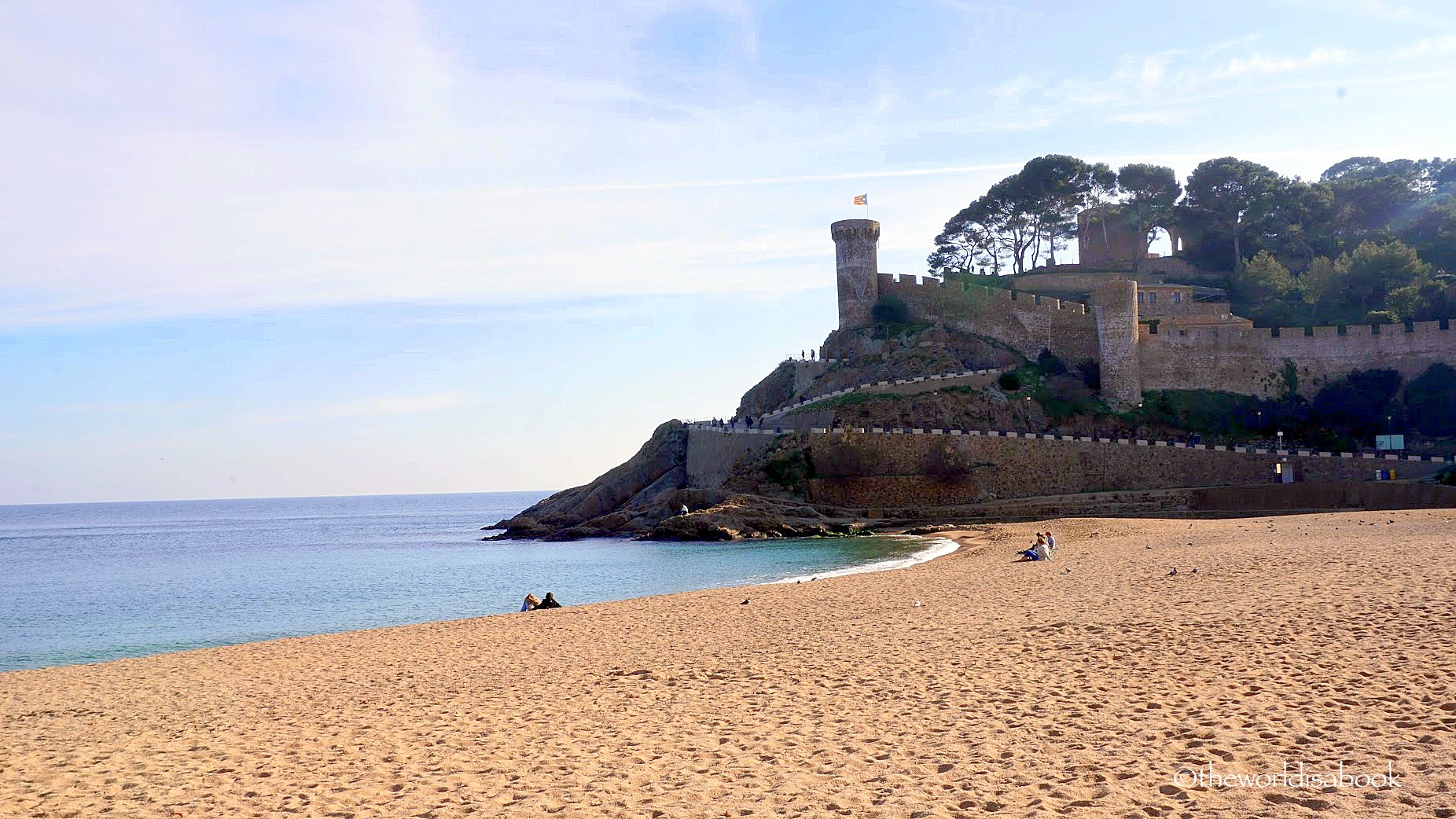
At .24 mile (385 m) long, there was plenty of space to stretch out and relax. There aren’t many places where you have the view of the Mediterranean and a medieval castle overlooking the town all in one. Tossa de Mar is actually Costa Brava’s “last fortified medieval town.”
The medieval La Vila Vella castle, the town’s token symbol, was built in the 12th century to protect the town from pirates. Its towering walls surround it, along with seven watchtowers, and it encloses the charming old town area known as Villa Vella. Many of the castle’s towers and defensive walls are surprisingly still in great shape.
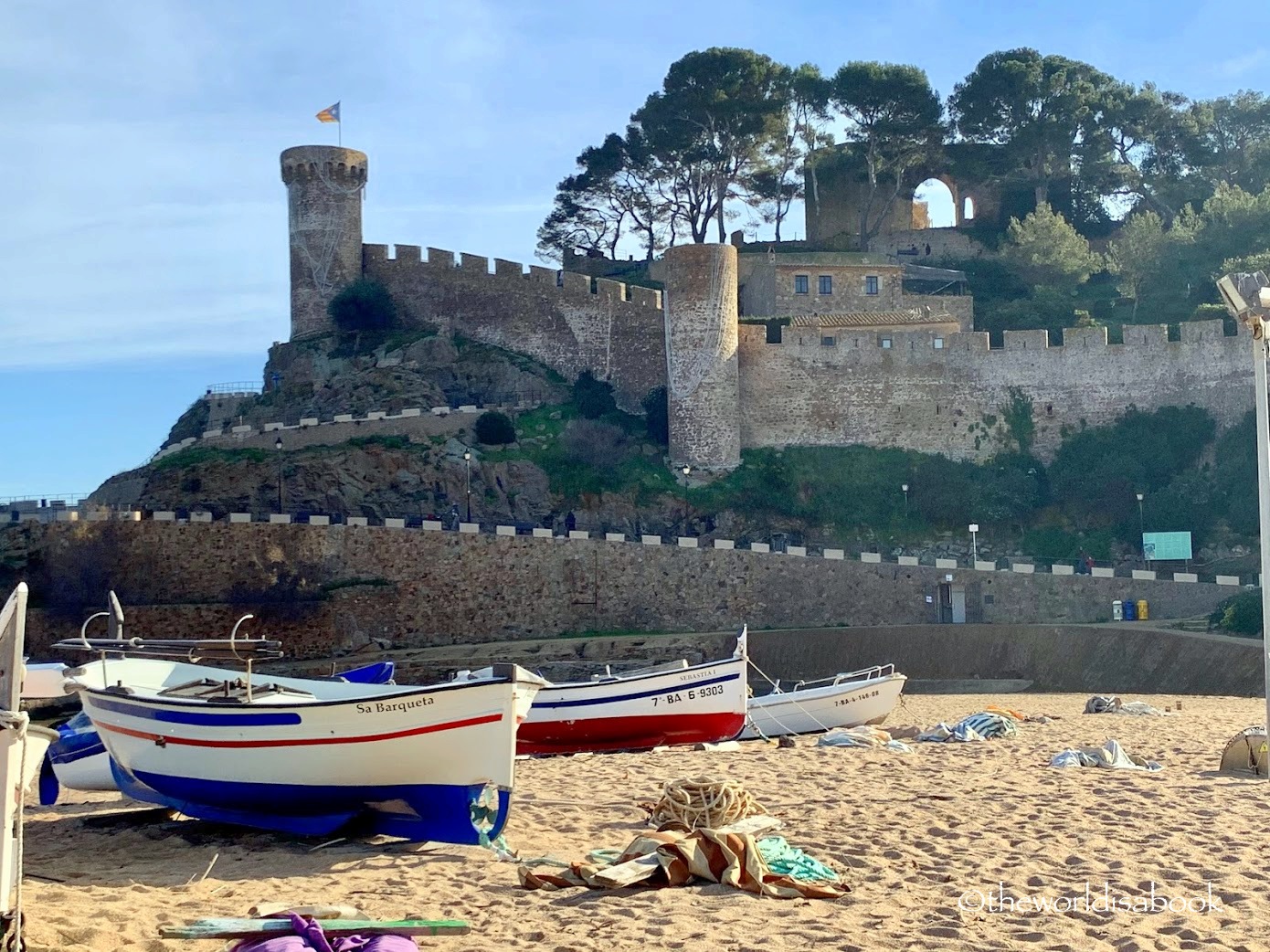
We enjoyed our lunch at Club Nautico Tossa de Mar with plenty of fresh seafood, paella and some sangria. It was one of our favorite meals especially with the Mediterranean and the castle as a backdrop. Tossa de Mar is known as “blue paradise” and it truly lived up to it.

A few steps from where we ate was part of the promenade with a view of La Mar Menuda Beach. This picturesque cove with golden sand looked so inviting.
Best Beaches in Tossa de Mar to Explore
If you have a bit more time, this is an ideal spot to relax. Other beaches in Tossa de Mar to explore are: Platja del Reig, and Platja Es Codolar. Boat trips are also available to beautiful coves like Cala Giverola or Cala Llevadó.
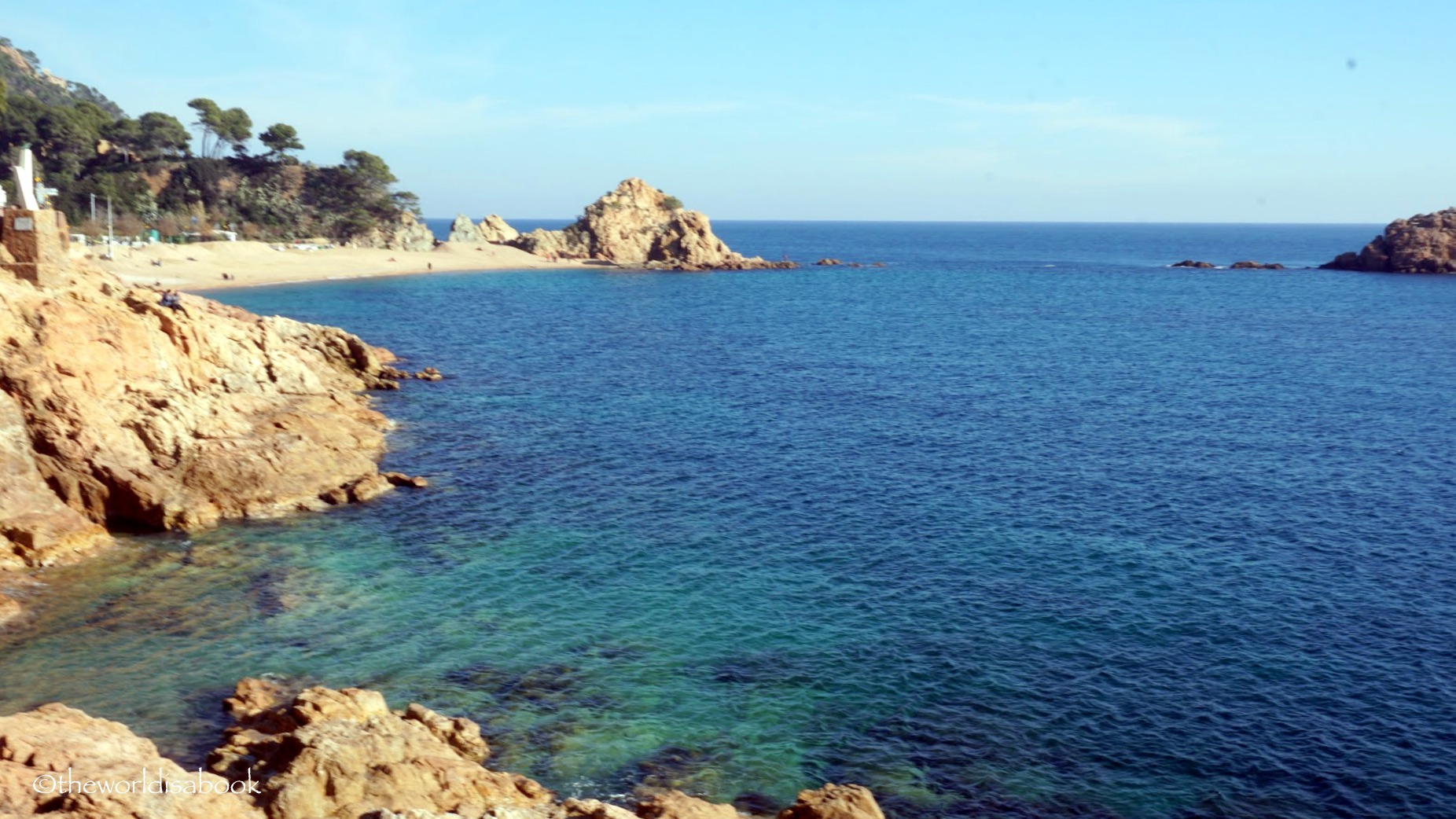
The Palafrugell municipality has several captivating beachside towns and rural villages to see: Calella de Palafrugell, Llafranc, Tamariu, Ermedas and Llofriu and the town of Palafrugell itself. We were only able to visit the first two briefly.
We really enjoyed the drives along these picturesque villages where sometimes it was hard to distinguish their borders. If you’re visiting without a rental car from July to September, the Julivia tourist bus offers a route that stops at most of the Palafrugell main towns and major attractions for a very reasonable price.
Calella de Palafrugell
Our next stop was the unique fishing town of Calella de Palafrugell. Its whitewashed buildings almost reminded us of Santorini, Greece. We enjoyed walking its cobblestoned streets surrounded by charming houses, tiled roofs and terraces.
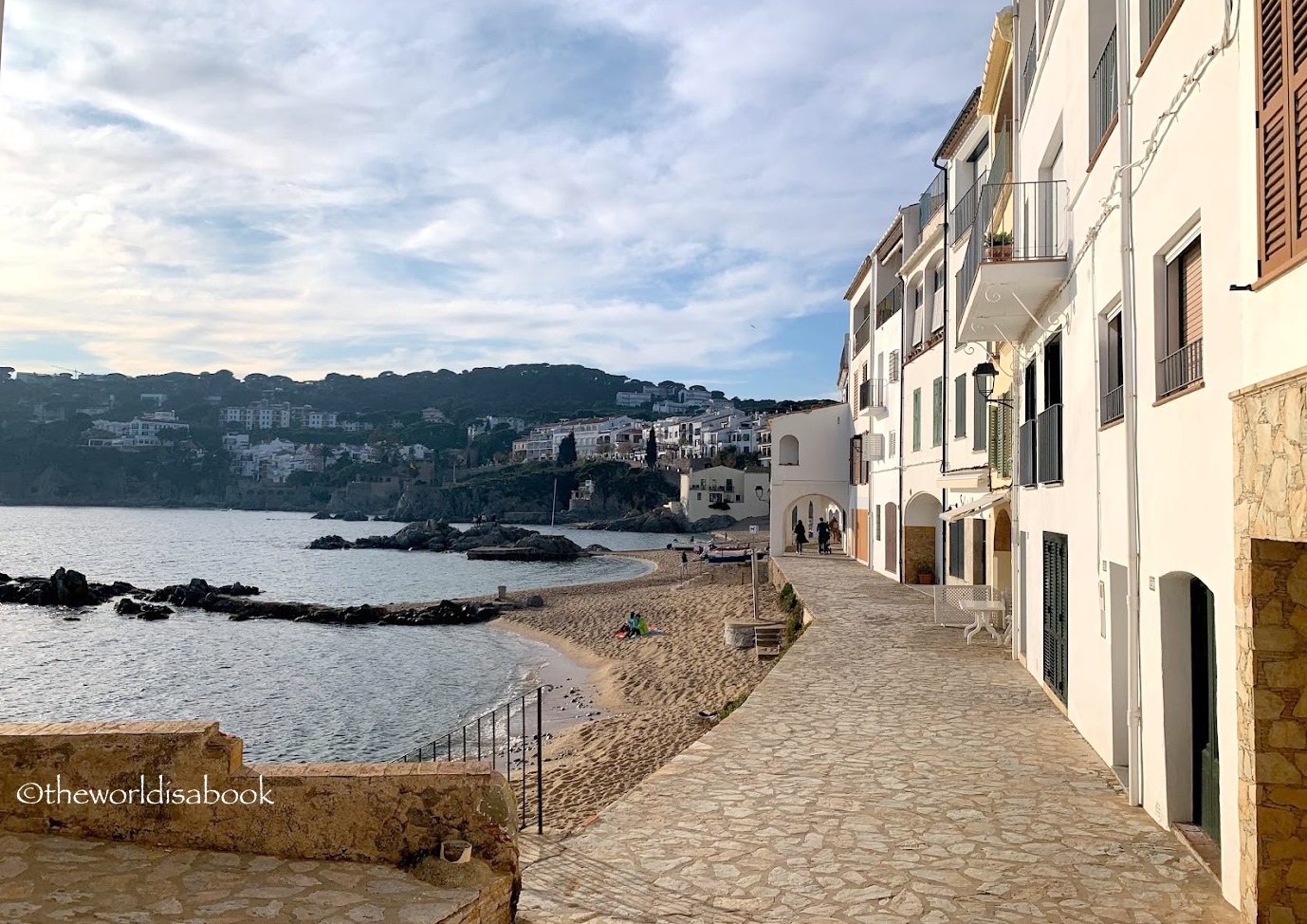
There were eight beaches that surrounded the village. The most popular are El Canadell and Els Canyissos beaches. Spanning a length of 200 m of golden sand, the major highlight for us here was the old fisherman’s houses along the sand with their colorful doors.
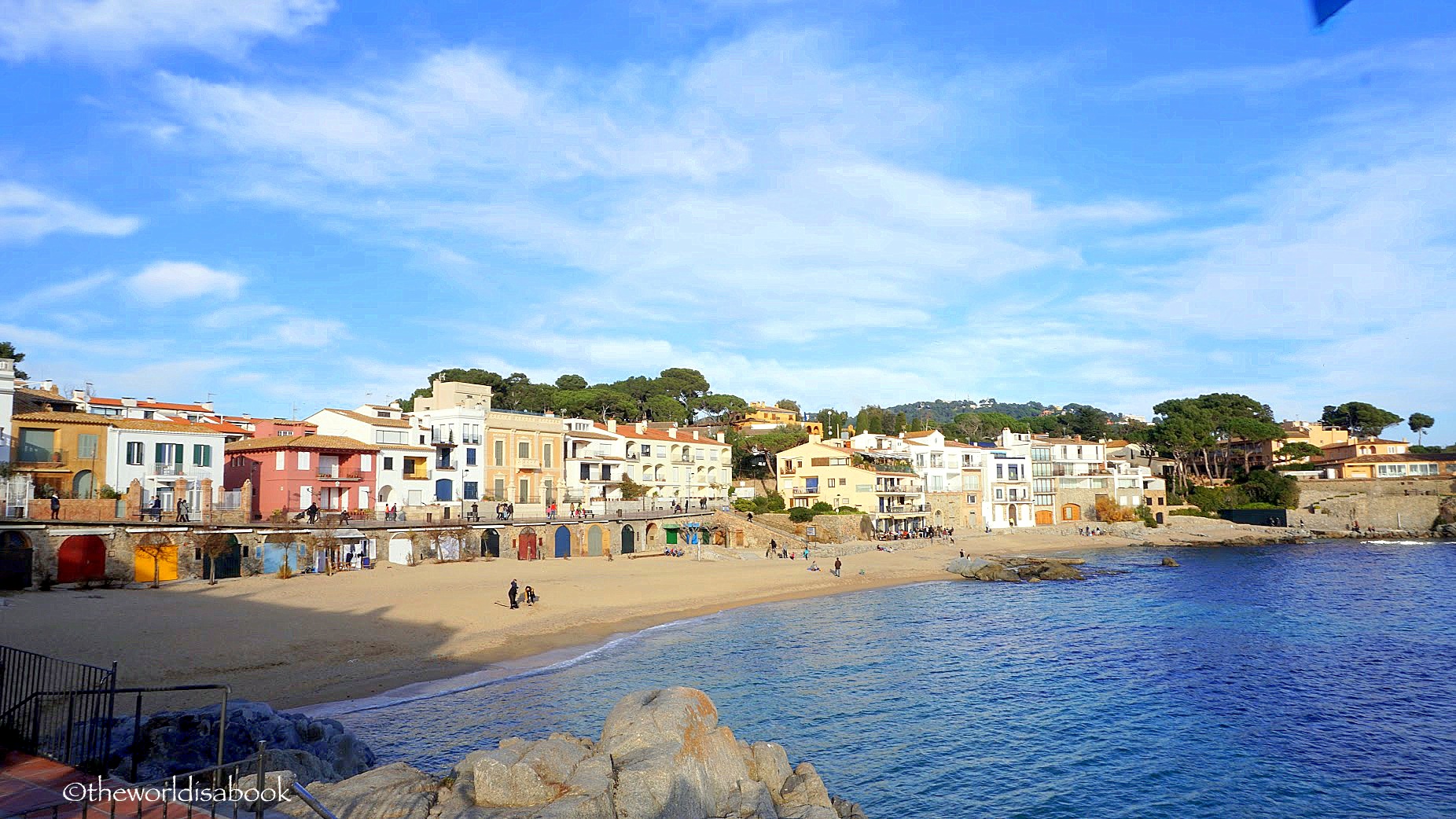
We also caught a glimpse of Port Bo which is the town’s harbor neighborhood and filled with several wooden boats. The government declared this site a Cultural Heritage of National Importance.
Llafranc
We briefly stopped in the old fishing village of Llafranc. I loved their promenade lined with shops and restaurants alongside the beach.
This would be the ideal spot to people watch and eat a delicious meal. Apparently, Ernest Hemingway and Salvador Dali also enjoyed hanging out along this promenade.
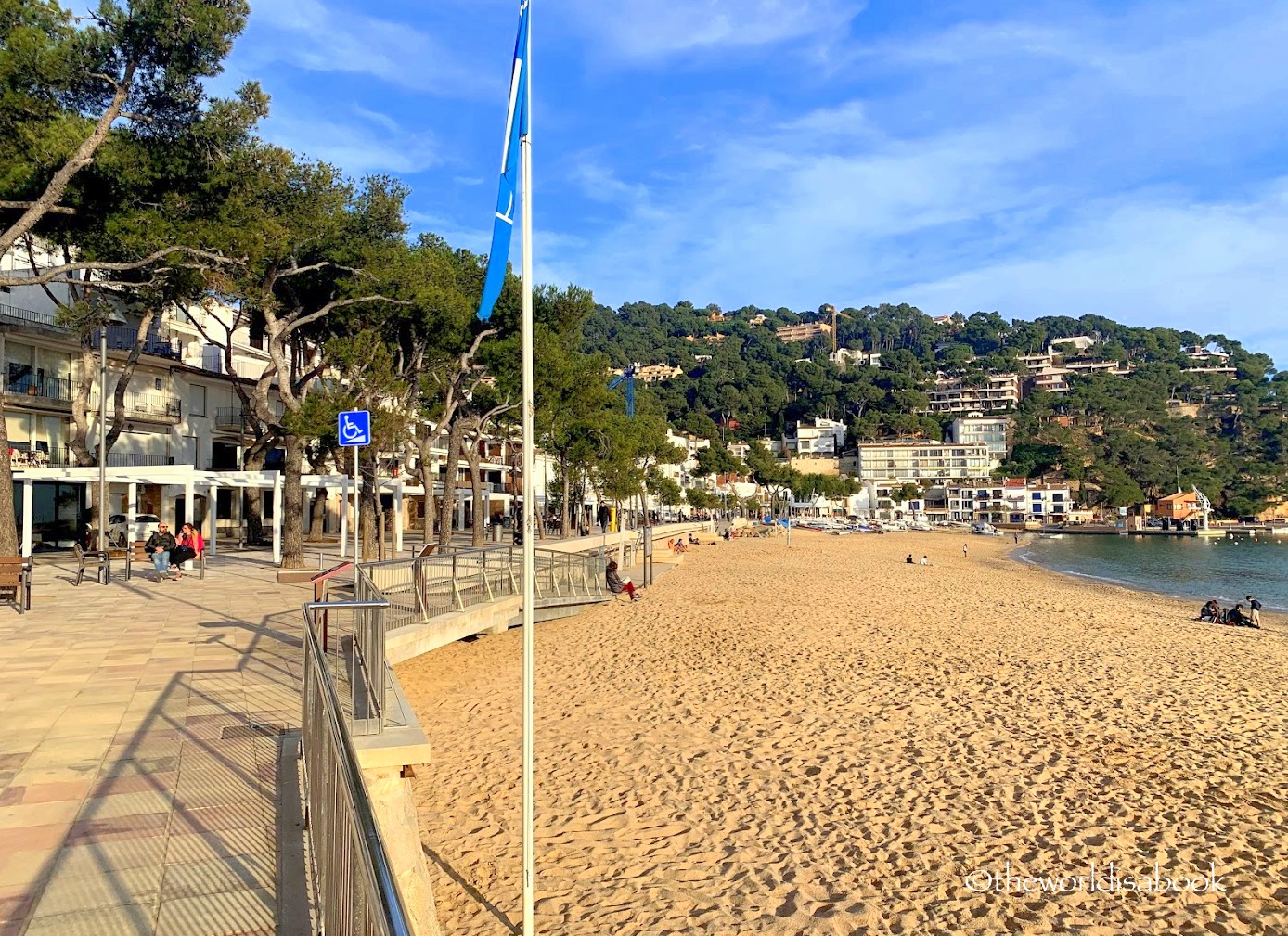
If you have more time to spend at the Palafrugell area, check out Cap Roig Botanical gardens and its castle. It has over 1,000 plant species from around the world, many art pieces and considered one of the best gardens in the region. You’re in luck if you’re visiting during the summer for the Cap Roig Gardens Festival.
Sant Sebastia de la Guarda Historical Site is an idyllic mountaintop village that is over 7,000 years old. Visitors can visit the historic site, a lighthouse, 15th century watchtower and an 18th century inn. Cap Roig and Sant Sebastia offer exceptional ocean views.
Explore the town of Palafrugell which has many historical sights. This was once a fortified city and some remnants of the walled city is still visible.
Begur
Our last destination in our Costa Brava towns to visit day trip itinerary was Begur. This coastal village is known for its beaches and coves. We decided to visit the ruins of the 10th century castle overlooking the town.
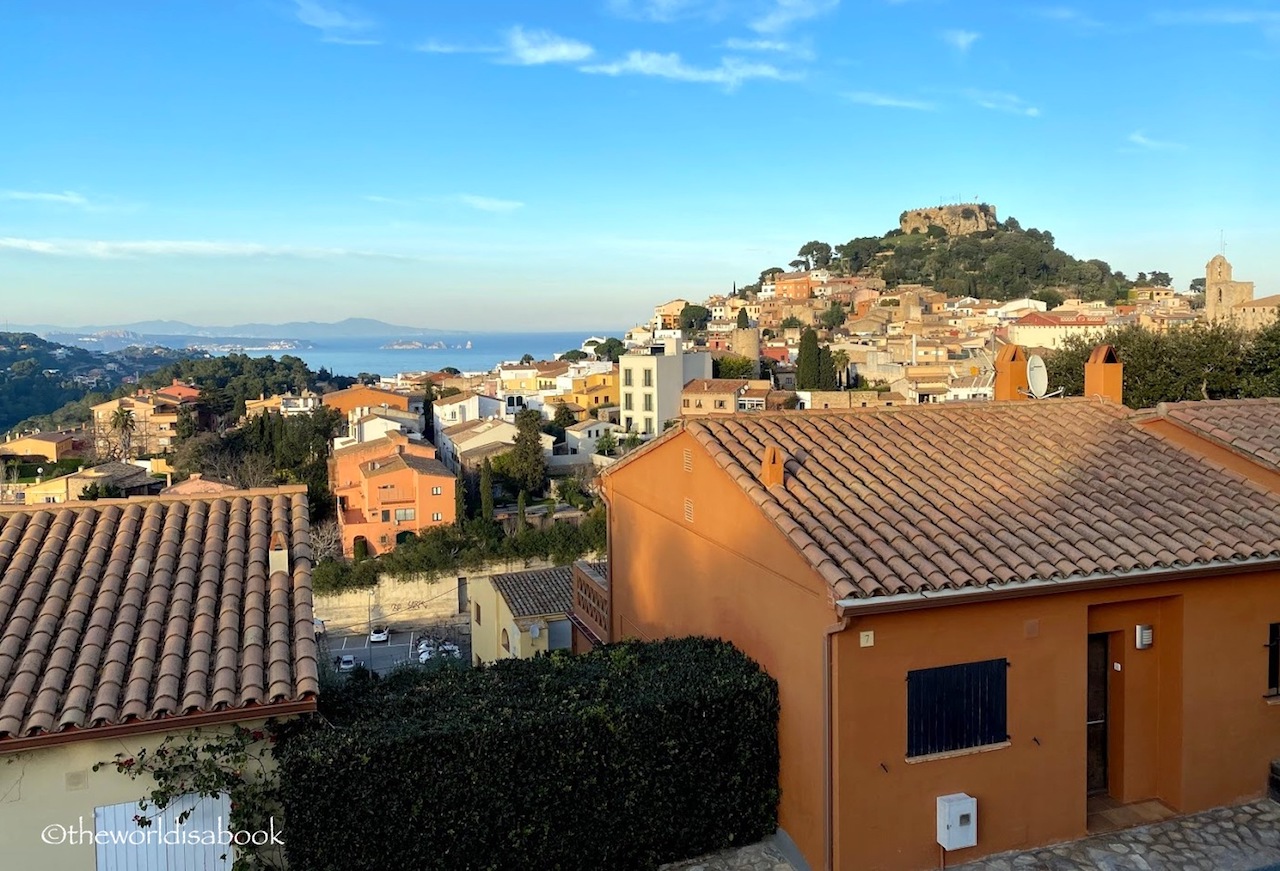
Parking was at the bottom of the road that led uphill to the castle ruins. There was a bit of a steep incline that went through a small village. But, the views from the top were well worth the effort. We were also able to see part of Begur’s coastline.
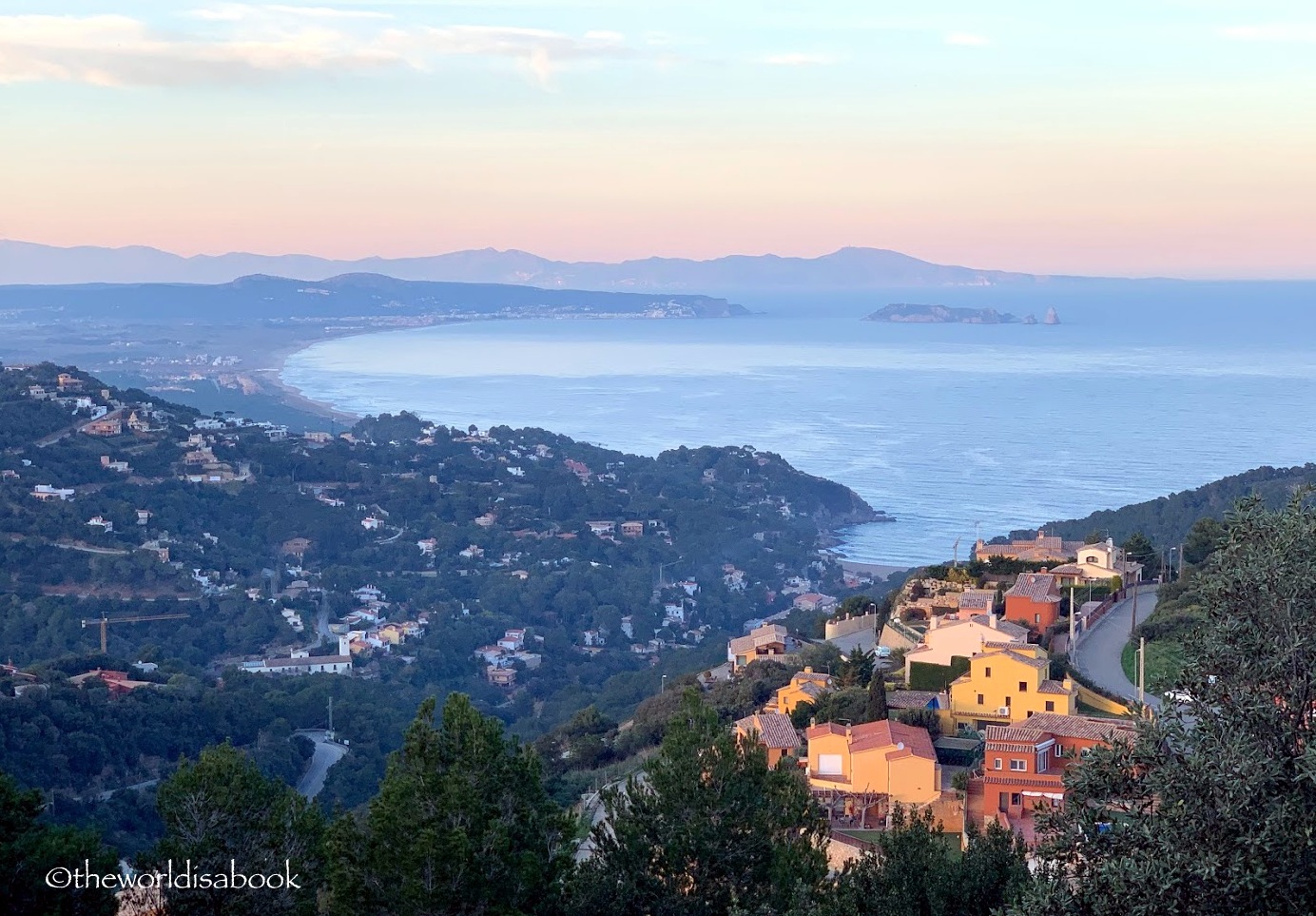
It was really wonderful to see the old town from above. From there, we could see the winding cobblestone streets, squares, the church and glimpses of the colonial Indiano houses.
Surprisingly, Begur has cultural ties to Cuba. Many of Begur’s residents moved to Cuba in the 19th century due to an economic crisis. Some of those successful immigrants eventually returned and built grandiose, colorful and colonial Cuban-style mansions.
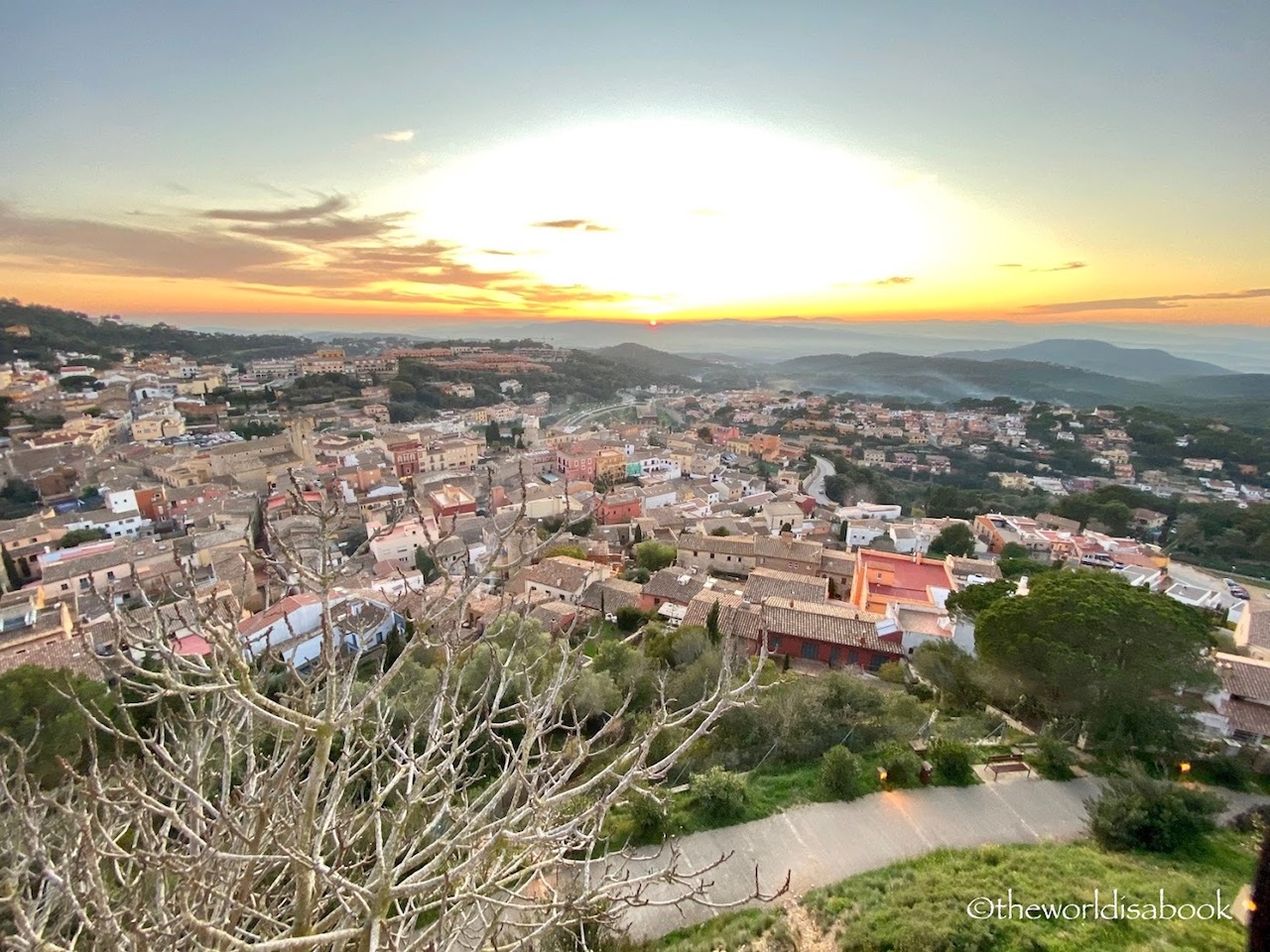
There many not be much left of the hilltop castle. But, the ruins offered the ideal spot to watch the sunset. There were quite a few people there enjoying it there too.
With the sun setting behind the Pyrenees Mountains and the colors changing on the other side at the Mediterranean, it was the perfect way to end our day trip to these idyllic Costa Brava towns. We highly recommend a day trip here from Barcelona or Girona or if you’re lucky enough, a few days at one of these coastal towns.
The World Is A Book contains affiliate links and is a member of the Amazon Services LLC Associates Program. If you make a purchase using one of these Amazon links or any of the product links, we may receive compensation at no extra cost to you. See our Disclosure Policy for more information.
Tips for Costa Brava Towns to Visit
Getting There: These Costa Brava towns we visited were about an hour from Barcelona. It was an easy drive on major highways.
We went through a couple of toll roads but the tolls were pretty reasonable. If you’re coming from Girona, it is about 35-40 minutes.
While it is possible to get to most of these best Costa Brava towns by train and/or bus, it really is so much more convenient to rent a car. Click here to check on the latest prices for rental cars in Europe. We didn’t have any issues finding parking in the Costa Brava towns but that may largely be due to when we visited.
We were here on a weekday in early January. Many of the beaches and some towns were largely deserted during our visit.
But, please keep in mind their busiest times here during late July and August. The beaches get very crowded. If you can visit outside this timeframe, it can make a huge difference with your experience here.
If you have more time and are a fan of Salvador Dali, then don’t miss visiting the other Costa Brava towns of Cadaqués and Figueras. Whitewashed buildings and rocky beaches fill Cadaques, a coastal village.
Visitors can see Salvador Dali’s House Museum, the old town area, San Jaime castle and Cap de Creus Natural Park. The town of Figueras offers the popular Dali museum, and Sant Ferran Castle. We highly recommend getting out of Barcelona and visiting these best towns in Costa Brava.
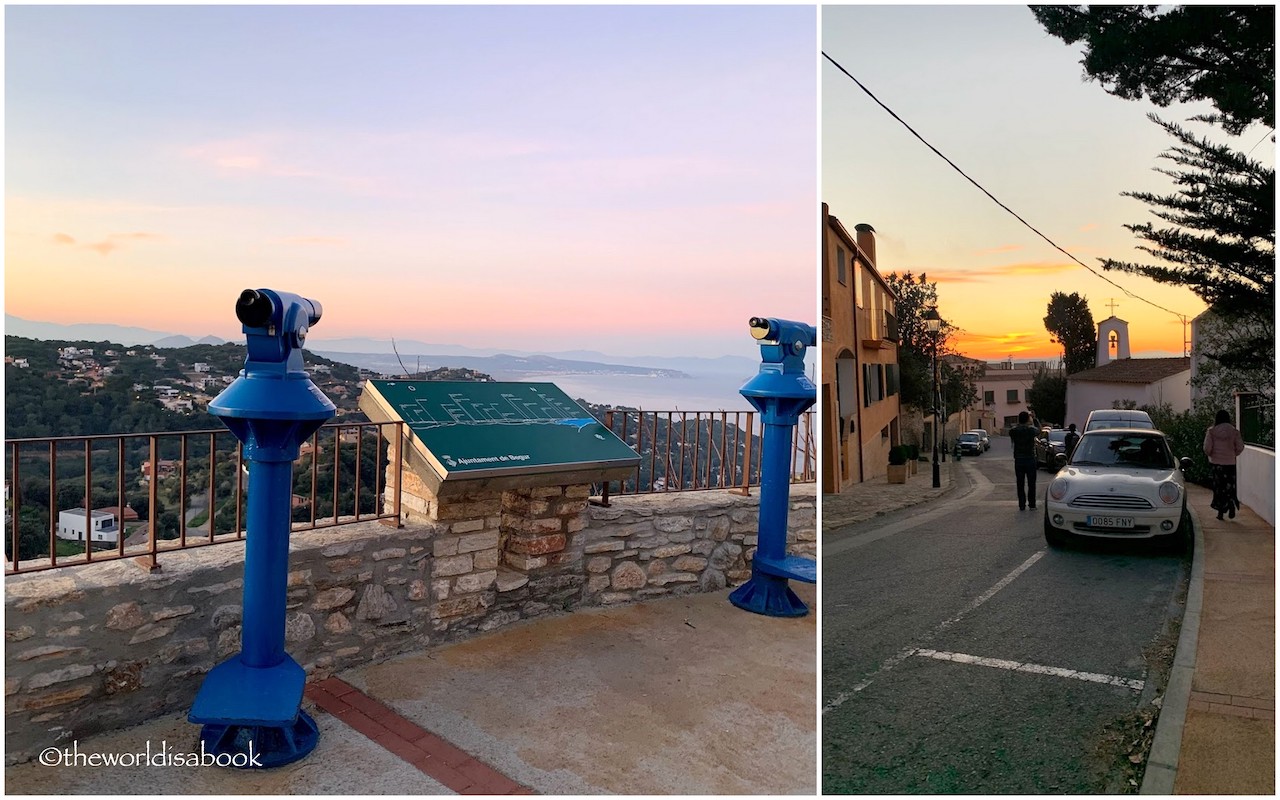
If you would like to do a guided tour to visit these Costa Brava towns, please check the following tours.
Pin it for later!
